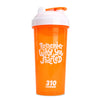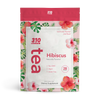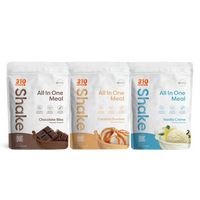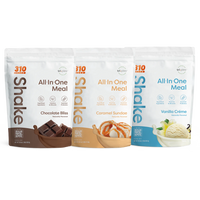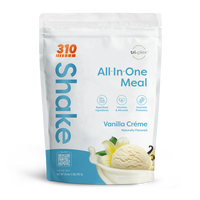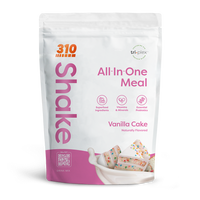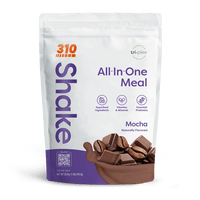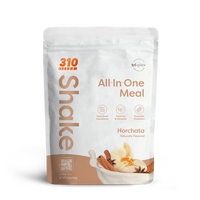Fitness trackers are a wonderful way to monitor your health and weight loss goals and to help motivate yourself to be more active each day. And now that you’ve invested in a fitness tracker (or might be about to!), it’s important to get the most out of it that you can.
These 16 easy tips and tricks will help you to use your fitness tracker to reach your health and fitness goals with ease.
The first thing you need to do is take steps to properly set up your fitness tracker and get it ready for action! Then, make sure you’re incorporating it into your daily routine. Here’s how you do it:
Fitness Tracker Basics
![]()
1) Wear It Everyday
While it might seem obvious, one of the best ways to get the most out of your fitness tracker is to wear it every day - which will give you the best, most accurate information about your lifestyle.
Even (or especially!) on your lazy, “stay-at-home” days, it’s important to track your movements. This helps create an honest and reliable measurement of your activity levels, so you can use that information as motivation for change.
2) Adjust the Fit
You’d think that putting on your fitness tracker would be as simple as closing the band. But, it’s not quite that easy! You want your fitness tracker to fit snugly so that it can track your movement accurately, but not so tight that it’s hurting you or causing skin irritation.
When you first get your fitness tracker, play around with the fit and find the happy-medium where it fits your wrist snuggly enough to track your heart rate, but not so tight that it’s leaving indentations in your skin. If the band doesn’t fit you well, most fitness trackers have interchangeable bands, so you can find one that’s better.
3) Wear It on Your Non-Dominant Wrist
Most people put their fitness tracker on the wrist that feels comfortable to them, like where you’d wear a watch, for example. But, did you know that it’s actually important to wear your fitness tracker on your non-dominant wrist? (AKA the wrist of the hand you don’t write with!)
The reason why is so that it doesn’t track all of the extra movements you make throughout the day with your dominant hand. Like all the hand-waving, high-fiving, and excessive hand movements while talking! This will give you a more accurate measurement of your actual movements throughout the day.
4) Choose the Right Charging Spot
![]()
Your fitness tracker is only useful if it’s charged and on your wrist (and not lost somewhere in your room!). To help make this easier, make sure that your charger for your fitness tracker is in a visible, accessible place. That way, when you do have to take it off to charge it, you remember to put it back on as soon as it’s charged again.
Some ideas on where to place your fitness tracker charger so it’s visible:
- Right next to your bathroom sink, where you’ll see it first thing in the morning
- Next to where you make coffee so that you put it on when you’re pouring your morning brew
- On your bedside table, so that you can put your fitness tracker back on as soon as it’s charged up
Get To Know Your Fitness Tracker (And How It Can Help You!)
The next thing you want to do to make sure you’re getting the most out of your fitness tracker is to explore all its features and functions so you know exactly how it can support you (and how it can fit into your daily life!).
5) Calibrate Your Tracker
Putting on your tracker and adjusting the fit is just the first step in making use of it. You also need to calibrate your tracker. This might involve measuring your step stride, choosing your personal settings in the fitness tracker’s app, and/or inputting some information about yourself.
The more data you can give your tracker, the more accurate the information you’ll get out of it. If you’re not sure how to set up your fitness tracker, you can find online tutorials for all of the biggest fitness trackers.
6) Set Up and Explore the App
Next, you’ll want to set up and explore your fitness tracker’s app. The app is where you collect, track, and review all of the information from your fitness tracker. In other words, it’s where the magic happens!
Inside the app, you’ll want to explore:
- What exactly the fitness tracker is tracking
- Customize the look of the home screen to feature what’s most important to you
- Put in your personal information so the tracker is optimized for you
- Set up your notification and reminder preferences
- Turn off any extraneous tracking information or settings that will be a distraction or annoyance to you
The importance of adjusting your settings and exploring the app to set it up properly is that it will help you to work towards your goal with minimal friction. Any bit of friction or difficulty that you might face in using the app or your fitness tracker will make it that much more difficult to reach your goals. You want to make using your fitness tracker as seamless an experience as possible.
7) Pair It With Other Apps
![]()
It’s also important to find ways to integrate your fitness tracker into other health apps you’re already using on your phone such as your period tracking app, fitness app, or meal tracking app.
For example, check your heart rate as you’re working out with your fitness app to gauge how hard you’re working. Or use your daily step count to more accurately calculate how many calories your body needs as you’re tracking your meals with your meal tracking app. And so on!
By integrating your tracker into how you use these other apps, it’s a lot simpler to remember to use and check it. You’re also adding one habit to an already existing habit, which makes adoption that much easier!
Set Clear Goals That You Can Track
As you’re setting up, getting to know, and integrating your fitness tracker into your daily life it’s also important to set clear, measurable goals for yourself. Then, use your fitness tracker to help measure, monitor, and track those goals until you reach success.
8) Decide on Your “Why”
Your “why” of owning and wearing a fitness tracker is a great first step towards deciding upon and setting goals for yourself. Why did you get your fitness tracker? What were you hoping to accomplish? The answer to these questions will help you to use your fitness tracker in alignment with your goals and your purpose of wearing it.
9) Set SMART Goals

Without solid, SMART goals, it’s a lot harder to actually accomplish the things you want to do with your fitness tracker, like losing weight, working out more, or becoming healthier in the new year.
SMART goals are specific, measurable, achievable, relevant, and time-bound. What this means is that your goals should be as detailed as possible, able to be measured effectively for success, realistic (not far-fetched), relevant to your deepest internal values, and attainable within a certain time frame that you set.
Here’s more information on how you can set measurable, successful goals.
10) Make Your Goals Measurable
The ‘M’ in SMART is one of the most important aspects of setting a goal with your fitness tracker. Measurable goals are attainable goals. If you can’t measure your goal, then it’s going to be difficult to know whether or not you actually achieved your goal. And, with a fitness tracker, it’s simple and easy to set up measurable goals.
For many people, a measurable goal they set with a fitness tracker will be to walk a specific number of steps per day or to get their heart rate elevated for a certain number of minutes per day. These goals are measurable, and as long as they’re reasonable with your current fitness level, then they’re also achievable.
11) Don’t Over Commit
The ‘A’ in SMART is about setting achievable or reasonable goals for yourself. If you over-commit by setting goals that aren’t achievable or set too many goals at once, you’re setting yourself up for failure.
You want to make your goals challenging, but achievable. Reaching your goal and getting that sense of achievement is what helps to keep you motivated to meet your goal the next day.
12) Build on Your Goals Gradually
Part of setting SMART goals with your fitness tracker is that you get to challenge yourself to do a little more than you normally would. This challenge can be fun, but it’s important to build it up gradually.
If you normally walk 5,000 steps a day, it might be too much to suddenly set the goal of walking 20,000 steps a day. Instead, use your fitness tracker to establish a baseline of where you are today. Then, start small and gradually ramp up the intensity as you accomplish the smaller SMART goals you set for yourself in the beginning.
Check-in on Your Progress (And Find Ways to Stay Motivated!)
It’s not just about setting goals, it’s about achieving them! And tracking your progress (and celebrating your wins!) is the best way to stay on target.
13) Set up Regular Check-Ins
This might not seem important when your fitness tracker is new, shiny, and exciting, but once the newness wears off, you may actually forget to check your fitness tracker and monitor those SMART goals you’ve set for yourself.
To make sure you’re regularly meeting your goals, you want to make checking your fitness tracker part of your routine. Decide upon a regular schedule on which to check in on your progress. You can do this daily, weekly, or even monthly. Then, if you’re not quite meeting your goals you can look at adjusting your daily routine so you can better aim for success.
14) Create a Reward System
While the internal sense of accomplishment you get when you reach your goals is great, let’s be honest, the best part is the reward! Adding a reward system to your health plans can help to motivate you along the way.
And, don’t forget, rewards don’t have to cost a lot of money (or be food-related!). You can set rewards for small things that fit into your financial and caloric budget. Like treating yourself to a new book or pair of shoes when you reach your daily step goal two weeks in a row!
15) Make It Social and Embrace Your Competitive Side
If you’re setting challenging goals for yourself and tracking them with a fitness tracker, a great way to keep yourself motivated to meet those goals is to make it social or competitive. You can make it social by inviting a friend or family member to take walks with you. Or, you can call friends while you’re out on a walk, getting in those steps.
You can also embrace your competitive side and use it to reach your goals by connecting with people on your fitness tracker app and challenging them to meet their steps goals with you.
And speaking of competition, don’t forget to join our 30-day Weight Loss Challenge!
16) Be Kind to Yourself and Don’t Obsess Over the Numbers
The last, and possibly the most important, piece of advice for using your fitness tracker to its fullest potential is to be kind to yourself. While you might be working towards some big health goals, it’s okay to slip up every once in a while or take a day for rest and just sit on the couch.
Perfection might feel like the only road to reach your goals, but it’s also a road that can lead to burnout. Taking care of yourself is just as important as reaching your goals. Use the numbers to motivate you to reach those goals, but don’t obsess. Be kind to yourself along the way!
Remember: Fitness Trackers Are One Tool in the Toolkit
If you’re new to using a fitness tracker, a good reminder is that it isn’t the answer to all your problems. While it might seem like your fitness tracker can do it all, it can’t. Your fitness tracker is mostly about movement, which is only one piece of the health puzzle.
You might also need or want fitness apps to support a regular workout routine, healthy eating tips from a dietician, a positive and supportive weight loss community, or tools like 310’s smart body weight scale to help you along the way. Use your fitness tracker to its fullest potential, but don’t forget that it’s just one tool in your extensive tool kit for reaching your health goals.
Want more articles to help you live your healthiest, happiest life in the new year? Visit the 310 Nutrition Blog for nutritious, scrumptious recipes, tips for living a healthy lifestyle, dietary guidance from 310 Nutritionists, and more!

